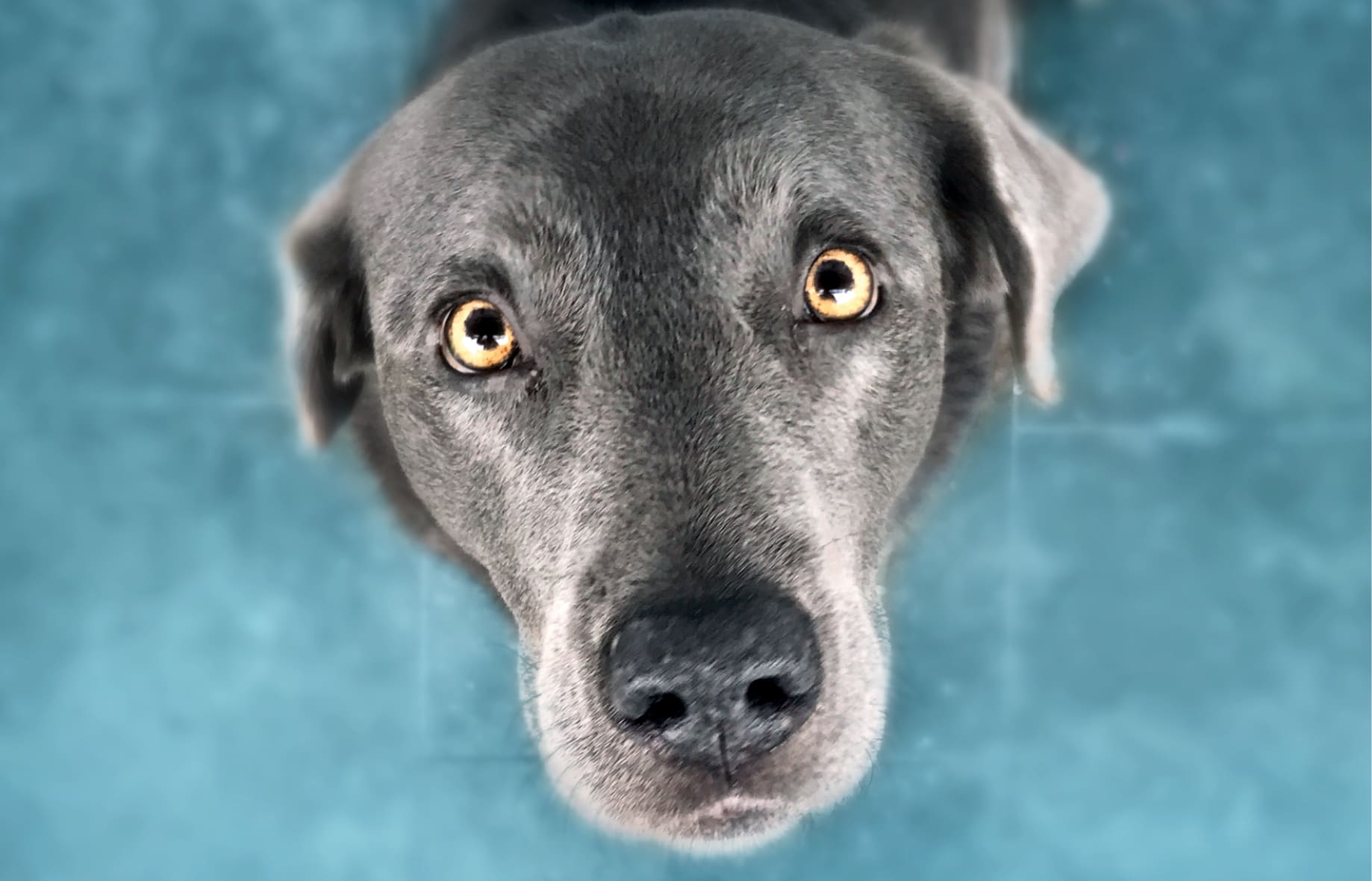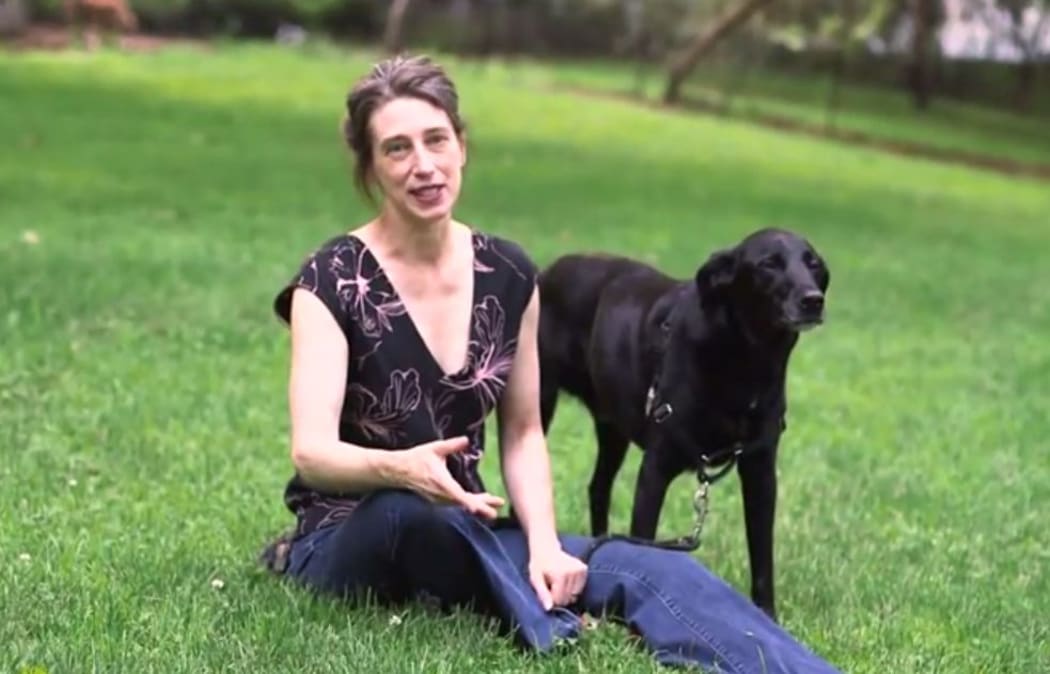Dogs are incredibly resourceful animals that have been changed permanently by their association with humans, says an American cognitive scientist.
Best-selling cognitive scientist Alexandra Horowitz's new book, Our Dogs, Ourselves, attempts to understand the age-old and often emotional relationship between humans and our dogs: how we acquire, name, train, raise, treat, talk to, and see them - and what that relationship tells us about ourselves and our society.

Photo: Supplied
Horowitz is a professor at Columbia University, where she teaches seminars in canine cognition and heads the Dog Cognition Lab. Here Horowitz and her team observe and study dogs in an attempt to answer the question "what it is like to be a dog?"
Horowitz, a dog owner and lover herself, started studying dogs early in her career.
“I began studying dogs when I was in graduate school and there weren’t a lot of people studying dogs’ cognitive abilities. There were no dog labs.”
Prof Horowitz says they study owned dogs by recruiting the owners from the community.
“They bring their dogs in and we give them little puzzles or games and show them things and see what they do.”
If she had to describe what it’s like being a dog in one word, it’s “smelly”.
“It’s worth many more words than that. They are this incredibly resourceful animal who were changed permanently by their association with humans.
“They’re this unusual creature who can live in the world of smell and also live in the world of people.”
She says there isn’t another relationship between animals and people like there is with dogs and humans.
“That’s partly because we’ve selected for types of dogs that are pleasing to us, that are responsive to us, that are useful to us. But it’s also because dogs give us so much in return. They’re not just responsive, but really sensitive to our moods.
“They greet us when we come home, they’re always happy to see us, they don’t hold a grudge, and the result is that we feel like they’re true companions, not just animals in the room.”

Alexandra Horowitz Photo: YouTube/Screenshot
Dogs have been domesticated for thousands of years, but it wasn’t until the 19th century that pure-breeding became a widespread practice.
“It was really a product of Victorian Britain that people started selecting dogs and inbreeding them with others of named breeds and created these hundreds of breeds that we have today.
“That began this transition from the dog that was functional, who guarded the house or joined you for the hunt, probably lived outside, maybe never came in the house – this transition from that to now where we have dogs living in our houses, sleeping in our beds with us, and dressing them in clothes.”
She says that by anthropomorphising dogs too much, we run the risk of misreading them.
“We assume we know who they are and what they’re doing when we’re just projecting our impressions onto them.”
Prof Horowitz says that dogs are smart in very different ways to humans.
“Socially, they’re really intelligent. They’re really good readers of our behaviour. They learn quite quickly what thing we do leads to another thing we do. They’re very observant. But, they’re not language users.
“Their communication is extensive, but it usually doesn’t have to do with anything vocal. Vocalisations are the minority of their communications. We can’t expect them to understand a lot of what we say… there’s no reason they should be thinking about epistemology and they’re not going to understand it.”
An example of anthropomorphising is what dog owners think is the “guilty” look when a dog appears to look upset and repentant for bad behaviour.
“I found that look came up much more often when the owner was about to scold them. In other words, this guilty look is a learned response to being punished. It’s a submissive response, it’s appealing to us.”
Essentially, the dog is appealing to our heart-strings to not hurt or punish it.
“It’s actually pretty effective. It doesn’t necessarily indicate that they have any reflection on what they’ve done before, or that they feel guilty. It doesn’t mean they don’t feel guilty, it’s just the look itself – that anthropomorphism – if we assume that we know the dogs inner experience because of it, we’re making a mistake.
“I think we have to be cautious about what we attribute to dogs and instead look at their behaviour first, rather than assuming.”
She says that the things that used to make dogs interesting to humans like their animal nature, are now seen as somewhat unappealing traits.
“We took this animal, a wolf, and bought them into our home presumably because we were amazed to have, and live with, another animal, another species. But now, we don’t want our dogs to have sex, for instance, we don’t want them to do things related to sex like mount each other… people dress up their dogs to look like themselves or look cute but aren’t really concerning themselves with the dog.
“It’s concerning because I think we owe them a good life, and a good life as a dog means being able to do doggy things, not being moulded into accessories for us.”
Prof Horowitz says the ideal day for a dog would be being allowed to run off leash and play with other dogs, roll around in grass, forage for things, go through puddles.
“All the things we want to put restrictions on – sniffing each other, jumping on each other, rolling around together. In some cases we’ve lost sight of what the dog would choose.”
She suggests people allow their dogs to be guided by their noses and spend time sniffing things.
“Letting them do that, letting them find things by smell, that’s thrilling for them and it’s something we don’t do often enough.”

